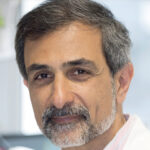Link to Pubmed [PMID] – 19765181
J. Intern. Med. 2009 Oct;266(4):372-89
Tissue and organ regeneration proceed in a coordinated manner to restore proper function after trauma. Vertebrate skeletal muscle has a remarkable ability to regenerate after repeated and complete destruction of the tissue, yet limited information is available on how muscle stem and progenitor cells, and other nonmuscle cells, reestablish homeostasis after the regenerative process. The genetic pathways that regulate the establishment of skeletal muscle in the embryo have been studied extensively, and many of the genes that govern muscle stem cell maintenance and commitment are redeployed during adult homeostasis and regeneration. Therefore, correlates can be made between embryonic muscle development and postnatal regeneration. However, there are some important distinctions between prenatal development and regeneration – in the context of the cells, niche, anatomy and the regulatory genes employed. The similarities and distinctions between these two scenarios are the focus of this review.

